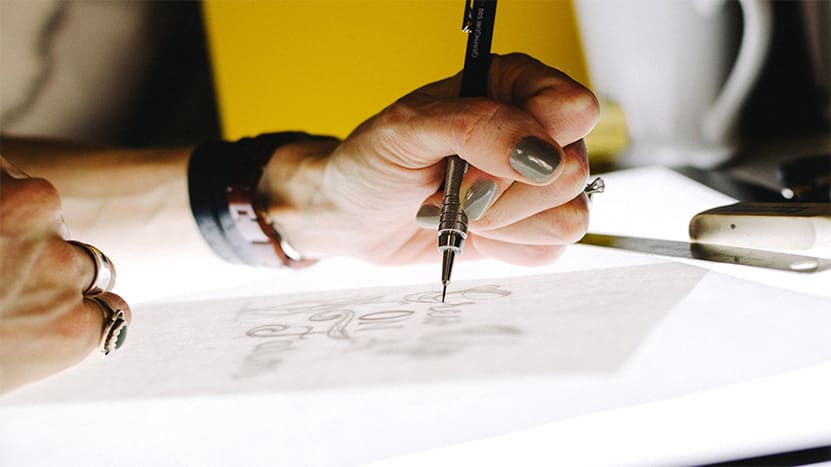Q: What makes an amazing logo design?
A: Strategy.
The word strategy is cliche, maybe boring at this point. We’ve all heard it a thousand times. However, a strategy is the single most important thing when designing an amazing logo, because logo design without strategy is a gamble.
Developing a strategy for your brand is a lot like planning an outfit (one that you can’t take off, but an outfit nonetheless) and in order to do it right, you need to think long and hard about everything that the outfit is supposed to do, and to whom it is meant to appeal, and what it is supposed to make those same people feel.
The party example.
Think of it this way: What kind of outfit would you pick out for a party that you knew nothing about? Is it a costume party? Who knows! Is it a baby shower? Maybe! Is it a pool party? Could be! Under these circumstances, you’ll probably pick an outfit that is just… safe.
But if you think about a time when you walked into a party and owned the room, what was going on? Most likely, you had ALL the info, and you knew exactly how you wanted people to feel about you at that party. Maybe “wow, that man looks rich” or “wow, that woman looks like a good mom” or “that is one intelligent looking person”. You were prepared and you knew what to do to accomplish your goals.
Risky behavior.
Sounds hard? Well, it is. But the other option is gambling with your brand! You don’t want to put this in the hands of a stranger and let them run with their own aesthetic inclinations. That’s a scary, silly idea (and expensive, too!).
Before we at Branding For The People will EVER design your logo, we first put through a strategic planning process…
What we do.
The process is our Intensive, and the final product is a Brand Platform. This tells us exactly what your brand is supposed to make people feel, and how it’s going to make them feel those things.
Let’s break it down a little further so you can see all the things that go into building a brand that compels people to do what you want them to do…
- Target Audience. We work with you to define everything about the audience you’re trying to reach, from basic demographics to how they feel about the most minute aspects of their life. Children, parents, hometown, it’s all fair game.
- Problems, solutions, proof. You’ve got problems? We’ve got solutions, and this is how we know they work.
- Brand Archetypes. Identifying your brand’s character and how it interacts with your customer base.
- Purpose & vision. Purpose and vision statements clarify why your company exists and where it’s going.
- Values, attributes, voice, & proposition. There’s a lot packed into this step, and this is one of the most important ones
- The competitive review. You need to know who and what else is out there to know where you stand and what your strategy will be.
- Brand Platform, & Brand Idea. This is the heart of your business, and critical to consider to create an effective logo.
- Best, unique, & relevant. Differentiating yourself by knowing what you’re best at, what makes you unique, and why you’re relevant helps guide logo creation, and may help you consider options you’d never think of otherwise.
- Positioning map. Knowing where you stand in relation to your competition offers insight into how you want to present yourself visually.
- Brand vocabulary. The words you use impacts the imagery you want to put forward.
- Naming. We don’t have to explain how choosing the right name guides your logo creation.
- Problems, solutions, proof. In this step, you’ll clarify exactly what the problem you solve is and how you do it.
- Revenue streams, & offerings. Having a complete list of your products and services helps narrow ideas that might only apply to one aspect of your business.
- Brand Architecture. Visually speaking, architecture is incredibly important to logo design. Without knowing your Brand’s Architecture, you risk creating a logo design that just doesn’t work for every part of your business. This may make your brand appear fractured.
- Signature processes. Nobody else can do what you do the way you do it, and you can communicate this visually.
- Brand experience, & touchpoints. Your brand experience needs consistency, and not knowing your touchpoints can lead to a disorganized experience.
This isn’t even the complete process, start to finish. As you can see, there’s a lot more to putting together the right logo than just fonts and colors. Sure, some of these steps don’t seem directly related to your logo. But having a holistic strategy will make your brand much more focused, professional, and will likely identify holes in your strategy so you can address them before they become a problem.
If you don’t go through all of these steps BEFORE you start designing? Expect to get a logo design with more risk than reward…







